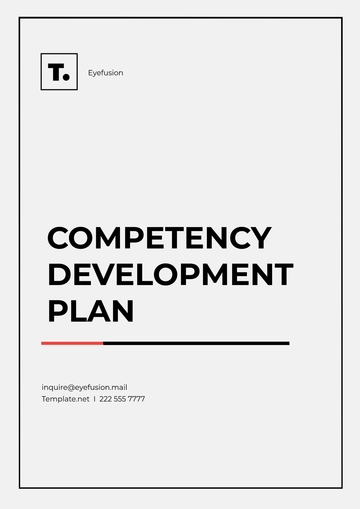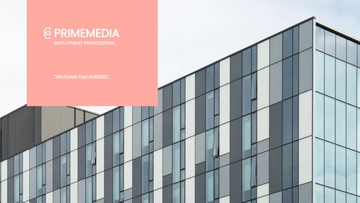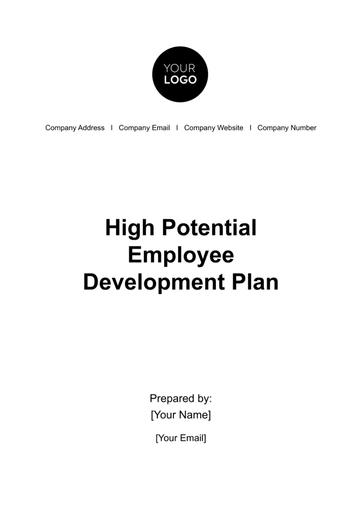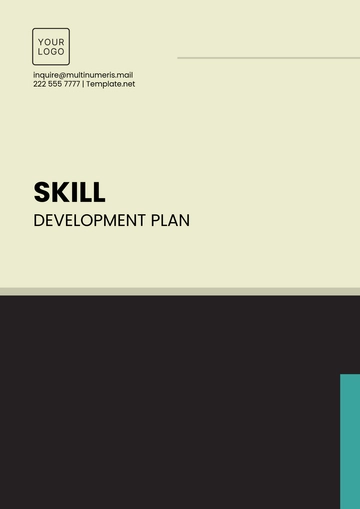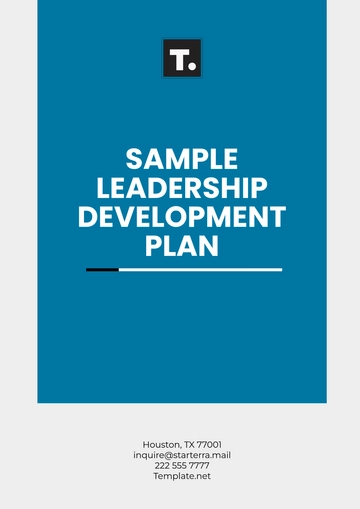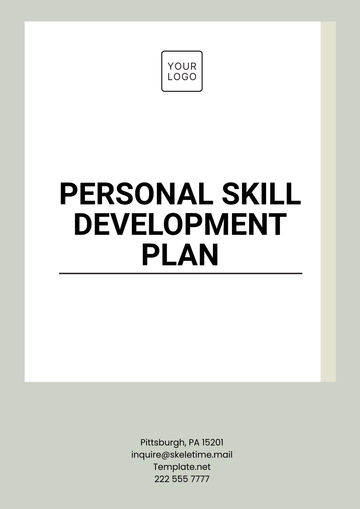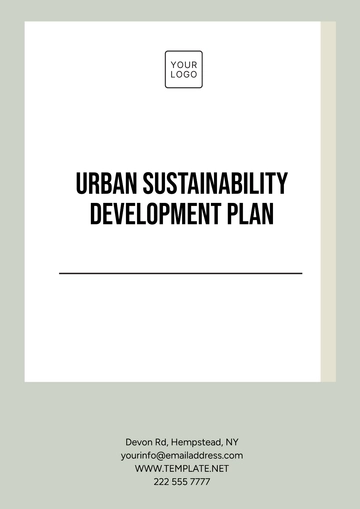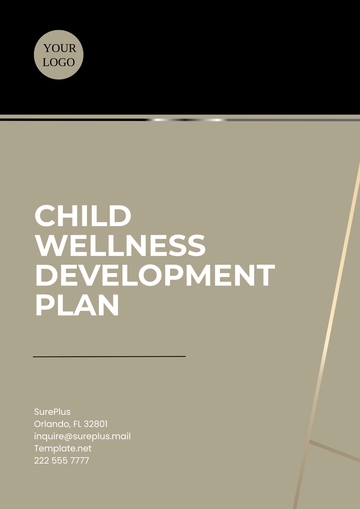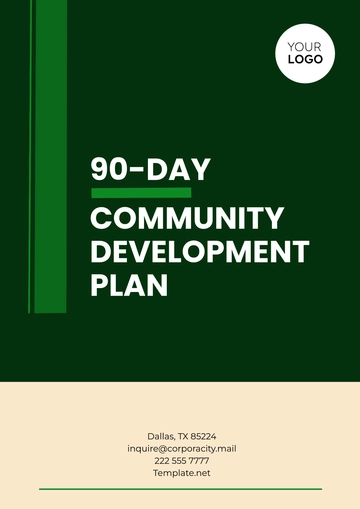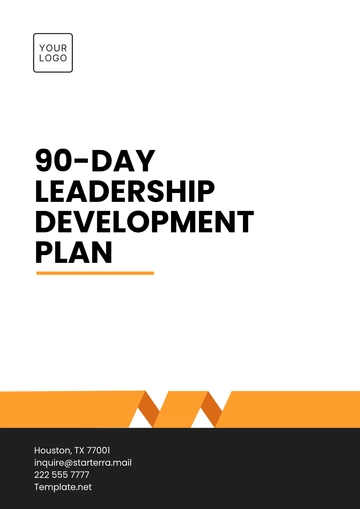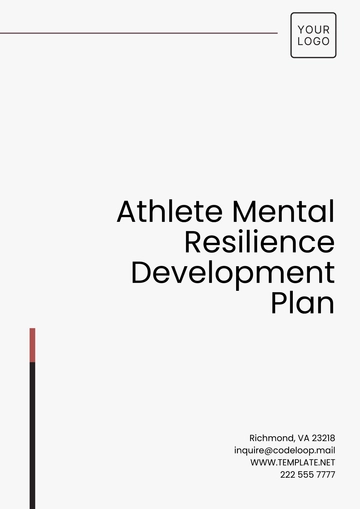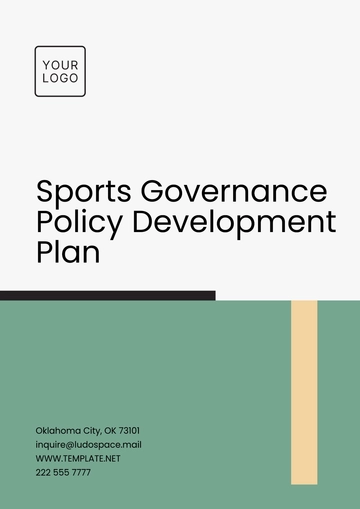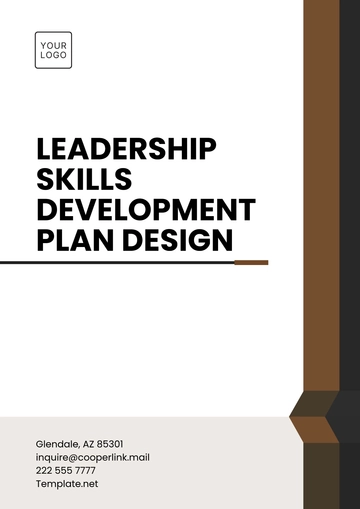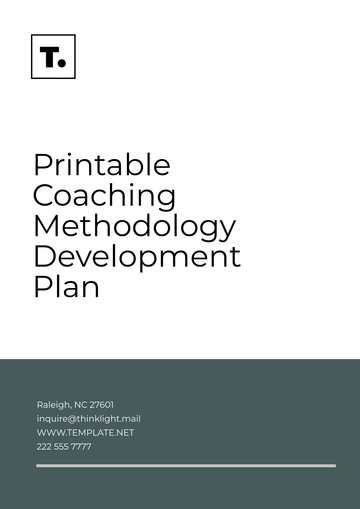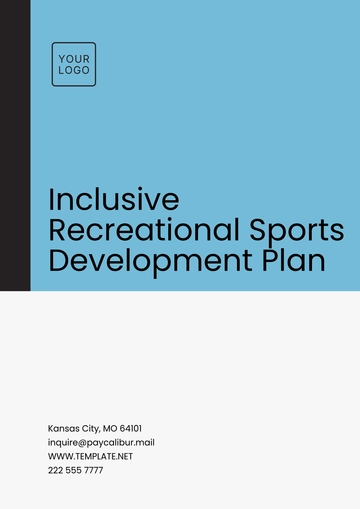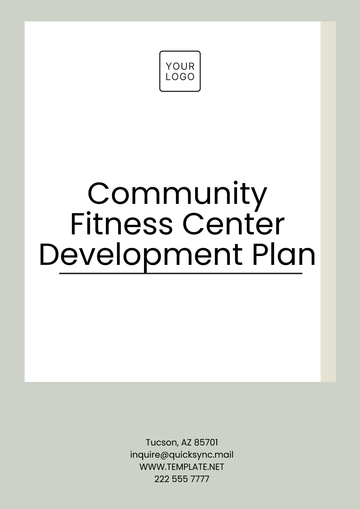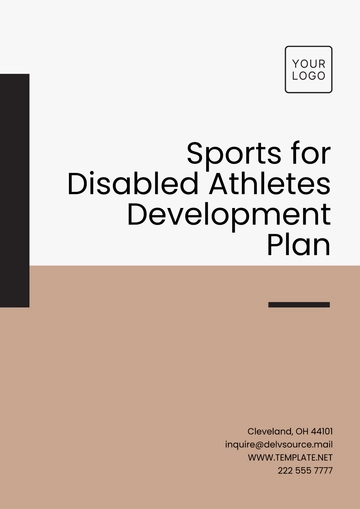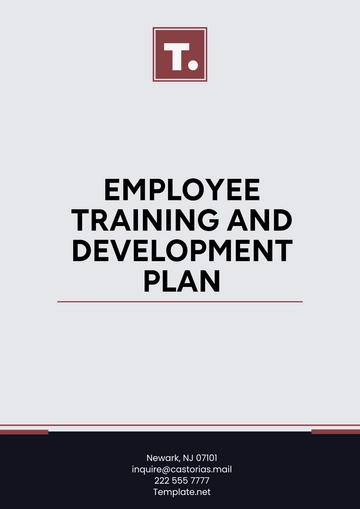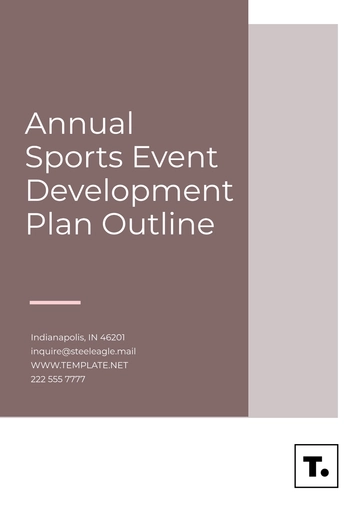Free Real Estate Sustainable Property Development Plan

I. Executive Summary
[Your Company Name] is proud to present the Sustainable Property Development Plan for the upcoming mixed-use development project located at [Location], covering an approximate area of 10 hectares. This plan outlines our commitment to creating a development that not only meets the current needs of our community but also preserves the ability of future generations to meet their own needs. Our sustainability goals are centered around three core principles: environmental stewardship, social responsibility, and economic viability.
The project aims to achieve LEED Platinum certification, reflecting our dedication to high-performance in human and environmental health. Key features include energy-efficient buildings, extensive green spaces, and community-focused amenities. By integrating sustainable design from the ground up, we anticipate reducing energy consumption by 40%, water use by 30%, and significantly enhancing the site's biodiversity.
II. Introduction
The proposed development site is situated in [Location], a region known for its rich natural landscapes and vibrant communities. As urbanization continues to expand, the imperative to develop responsibly and sustainably has never been greater. [Your Company Name] recognizes this as an opportunity to lead by example, showcasing how modern developments can contribute positively to their surroundings.
The scope of this plan covers the entire lifecycle of the development, from initial site analysis and planning through to construction, operation, and beyond. It will address both the macro and micro aspects of sustainability, ensuring that every decision made contributes to our overarching goals.
III. Sustainability Goals and Objectives
Our sustainability framework is designed to ensure that all aspects of the project contribute towards a balanced and sustainable outcome. The following table outlines our main goals and corresponding objectives:
Goal | Objectives | KPIs |
|---|---|---|
Environmental Stewardship | Reduce greenhouse gas emissions, Increase biodiversity, Minimize water usage | 40% reduction in baseline CO2 emissions, Double the site's biodiversity index, 30% reduction in water consumption |
Social Responsibility | Enhance community well-being, Ensure inclusivity, Create economic opportunities | 100% accessibility compliance, 10% of residential units as affordable housing, 200 new jobs created |
Economic Viability | Ensure the project's financial success, Maximize operational efficiency, Increase property value | ROI within 10 years, 20% reduction in operational costs, 15% increase in property value over 5 years |
IV. Site Analysis and Planning
Environmental and Social Context
Before initiating the development, a thorough analysis of the site's environmental, social, and economic aspects was conducted to inform our planning process. This included assessing the site's flora and fauna, soil quality, water resources, and existing infrastructure, as well as the socio-economic profile of the surrounding community.
Environmental Assessment: The environmental assessment revealed a diverse ecosystem with significant green cover and a small water body that serves as a habitat for local wildlife. Our planning includes measures to protect these areas, enhance biodiversity, and create natural buffer zones. Environmental considerations also extend to soil stabilization and erosion control, with plans to use permeable surfaces to manage storm water runoff effectively.
Community Impact Assessment: Engagement with the local community highlighted a strong desire for accessible green spaces, recreational facilities, and pedestrian-friendly pathways. There's also a need for affordable housing and job opportunities. Our plan incorporates a large public park, community gardens, and a mix of housing options, including affordable units. The development will also feature commercial spaces designed to attract local businesses, creating job opportunities and stimulating economic growth.
Accessibility and Transportation: A comprehensive transportation analysis emphasized the need for sustainable mobility solutions. Our development plan includes a network of bicycle lanes, electric vehicle charging stations, and pedestrian-friendly pathways. A partnership with local transit authorities will aim to enhance public transport links to the development, reducing dependence on private vehicles and contributing to lower emissions.
Sustainable Land Use Planning
The site planning phase leverages sustainable land use principles to ensure a harmonious balance between development and conservation. Key strategies include:
Zoning for Sustainability: The development is zoned to optimize land use while preserving natural habitats. Residential and commercial zones are strategically placed to benefit from natural lighting and ventilation, reducing energy consumption.
Green Infrastructure: The integration of green roofs, rain gardens, and green walls will mitigate urban heat island effects, manage storm water, and enhance air quality.
Preservation of Natural Features: Special attention is given to preserving and integrating existing natural features into the design. This includes maintaining mature trees, protecting the water body, and creating wildlife corridors.
V. Sustainable Design Principles
The development will employ cutting-edge sustainable design principles, including:
Principle | Details |
|---|---|
Energy Efficiency | Utilizing solar panels, geothermal heating, and passive solar design to reduce dependency on non-renewable energy sources. |
Water Conservation | Implementing a site-wide rainwater harvesting system and using water-efficient fixtures to minimize water waste. |
Sustainable Materials | Prioritizing materials that are recycled, renewable, and sourced locally to reduce our carbon footprint. |
Waste Reduction | Establishing a comprehensive waste management system that encourages recycling and composting. |
Biodiversity | Designing landscaping to support local flora and fauna, creating a green oasis that enhances the site's ecological value. |
VI. Construction Management
Green Construction Practices
The construction phase is critical in realizing the sustainability objectives of the project. To this end, [Your Company Name] is committed to implementing green construction practices, including:
Sustainable Procurement: A procurement policy that prioritizes materials and products with lower environmental impacts, such as recycled content, regional sourcing, and certified sustainable materials. This policy extends to choosing construction equipment with higher efficiency or powered by alternative fuels to reduce emissions.
Minimizing Site Disturbance: Construction activities will be carefully planned to minimize disturbance to the site's natural features and existing ecosystems. Protective measures will be implemented to safeguard the water body and any identified sensitive areas.
Waste Management: A construction waste management plan will be in place to reduce, reuse, and recycle construction and demolition waste. The goal is to divert at least 75% of the waste from landfills.
Energy and Water Efficiency: The use of energy-efficient construction equipment and practices, alongside water-saving measures, will be prioritized to minimize the environmental footprint of the construction process.
Air Quality and Noise Control: Measures will be implemented to control dust and emissions from construction activities, along with noise-reducing practices to minimize impact on the surrounding community.
Sustainability Training and Compliance
Contractor Selection and Training: Contractors and subcontractors will be selected based on their experience with sustainable projects and their commitment to green building practices. All construction personnel will undergo sustainability training to ensure compliance with our environmental standards and practices.
Monitoring and Reporting: A robust monitoring system will be established to track the environmental performance of the construction process. Regular reporting will ensure that any deviations from the sustainability plan are quickly addressed and corrected.
Post-Construction Sustainability Transition
Upon completion of construction, a comprehensive review will be conducted to ensure all sustainability features have been correctly implemented and are fully operational. This includes a final environmental site assessment to evaluate the impact of construction activities and confirm the restoration of any disturbed areas. A transition plan will also be developed to move from construction-phase sustainability practices to operational-phase sustainability management, ensuring a seamless handover to the property management team.
VII. Social Sustainability and Community Engagement
[Your Company Name] is committed to fostering a strong, vibrant community within and around our development. Our strategy focuses on three key areas: community engagement, affordable housing, and economic development.
Community Engagement: We will initiate a series of community engagement forums, workshops, and surveys throughout the development process. This ensures that local voices are heard and incorporated into the planning and development phases. Our aim is to create shared value, fostering a sense of ownership and belonging among community members.
Affordable Housing: Recognizing the critical need for accessible housing, we commit to allocating 10% of our residential units as affordable housing. These units will be indistinguishable in quality and integrated throughout the development, supporting a diverse and inclusive community.
Economic Development: The project is expected to create over 200 direct jobs during construction and 50 permanent positions post-completion. We will prioritize hiring locally and offer training programs to equip the community with the skills needed for future opportunities. Additionally, the development will include spaces for local businesses and startups, encouraging economic growth and innovation.
VIII. Economic Sustainability
Economic viability is essential for the long-term success and sustainability of the development. Our approach focuses on optimizing initial investments while ensuring ongoing operational efficiency and enhancing property value.
Financial Analysis: A detailed financial model predicts a return on investment (ROI) within 10 years, factoring in the savings from energy efficiency, water conservation, and reduced waste. Additionally, sustainable features significantly enhance the property's appeal, contributing to a projected 15% increase in value over 5 years.
Funding and Incentives: We will leverage government grants, tax incentives, and green financing opportunities to offset the higher upfront costs associated with sustainable development. These financial mechanisms make the project more attractive to investors and stakeholders.
Operational Efficiency: Sustainable design and technology significantly reduce the development's operational costs. Energy-efficient systems, on-site renewable energy production, and water-saving measures will lead to an estimated 20% reduction in utility costs.
IX. Implementation Plan
The implementation plan outlines the phased development approach, detailing timelines, responsibilities, and milestones.
Timeline | Details |
|---|---|
Phase 1: Site Preparation and Infrastructure (Year 1-2) | Includes site clearing, grading, and the installation of critical infrastructure like roads, utilities, and green spaces. |
Phase 2: Construction (Year 2-4) | Focuses on the construction of residential, commercial, and community buildings, employing green construction practices. |
Phase 3: Operations and Management (Year 4 and beyond) | Involves the leasing and sale of units, the opening of commercial spaces, and the ongoing management of the property, with a strong emphasis on sustainability practices. |
X. Monitoring, Reporting, and Continuous Improvement
To ensure our sustainability goals are met and maintained, a robust system for monitoring and reporting will be implemented. This includes:
Performance Tracking: Utilizing smart technology and IoT devices to monitor energy and water use, waste management, and biodiversity indicators in real-time.
Sustainability Reporting: Annual sustainability reports will be shared with stakeholders, documenting our performance against KPIs and detailing ongoing sustainability initiatives.
Continuous Improvement: Feedback mechanisms will be established for stakeholders and community members to suggest improvements. The development will undergo a sustainability review every five years to identify areas for enhancement and integrate new technologies or practices.
XI. Conclusion
The Sustainable Property Development Plan by [Your Company Name] represents a comprehensive approach to creating a development that is not only economically viable but also environmentally responsible and socially inclusive. By adhering to this plan, we aim to set a new standard for sustainable development, demonstrating that it is possible to create vibrant, thriving communities that respect the planet and its people. This project is a testament to our commitment to sustainability, innovation, and community, and we invite all stakeholders to join us in bringing this vision to life.
- 100% Customizable, free editor
- Access 1 Million+ Templates, photo’s & graphics
- Download or share as a template
- Click and replace photos, graphics, text, backgrounds
- Resize, crop, AI write & more
- Access advanced editor
Transform your vision into reality with Template.net's Real Estate Sustainable Property Development Plan Template. Expertly designed for eco-friendly projects, this template is fully customizable and editable with our Ai Editor Tool. Craft detailed, sustainable development plans that align with environmental goals, setting new standards in real estate. Elevate your approach to eco-conscious development, only with Template.net.
